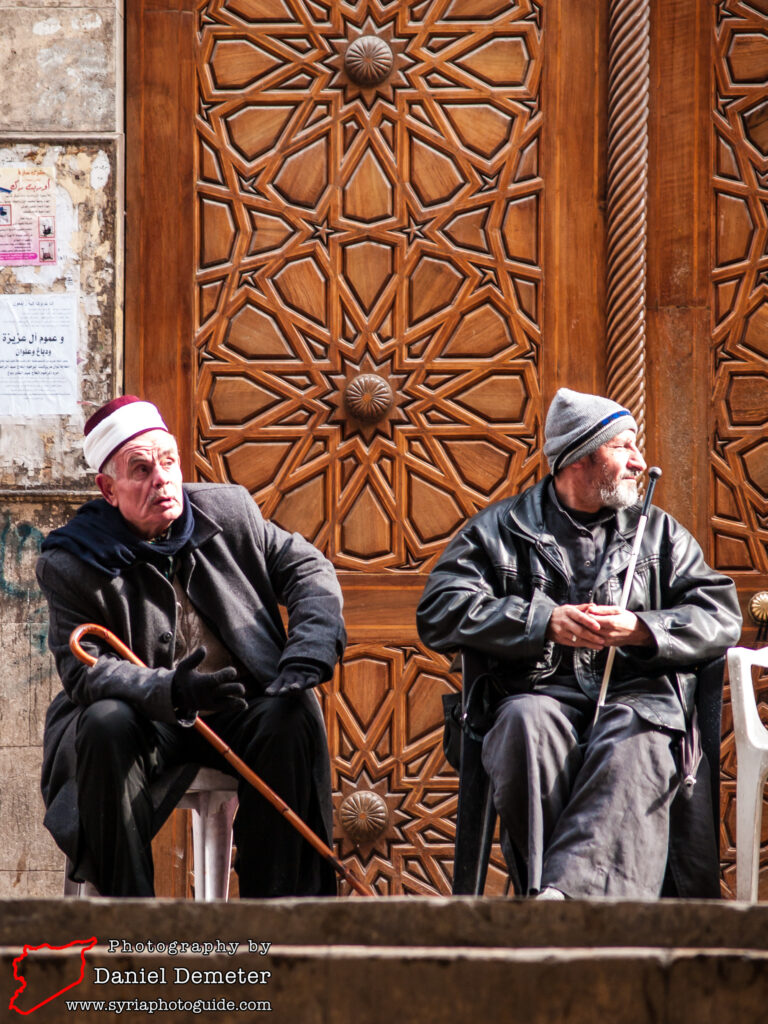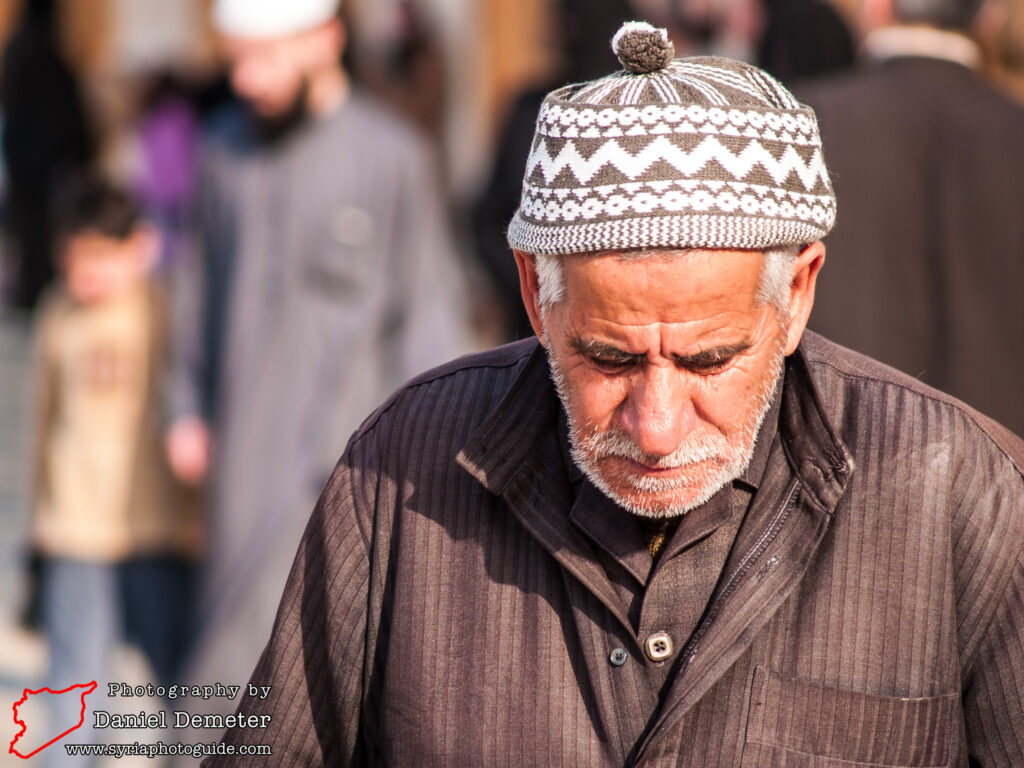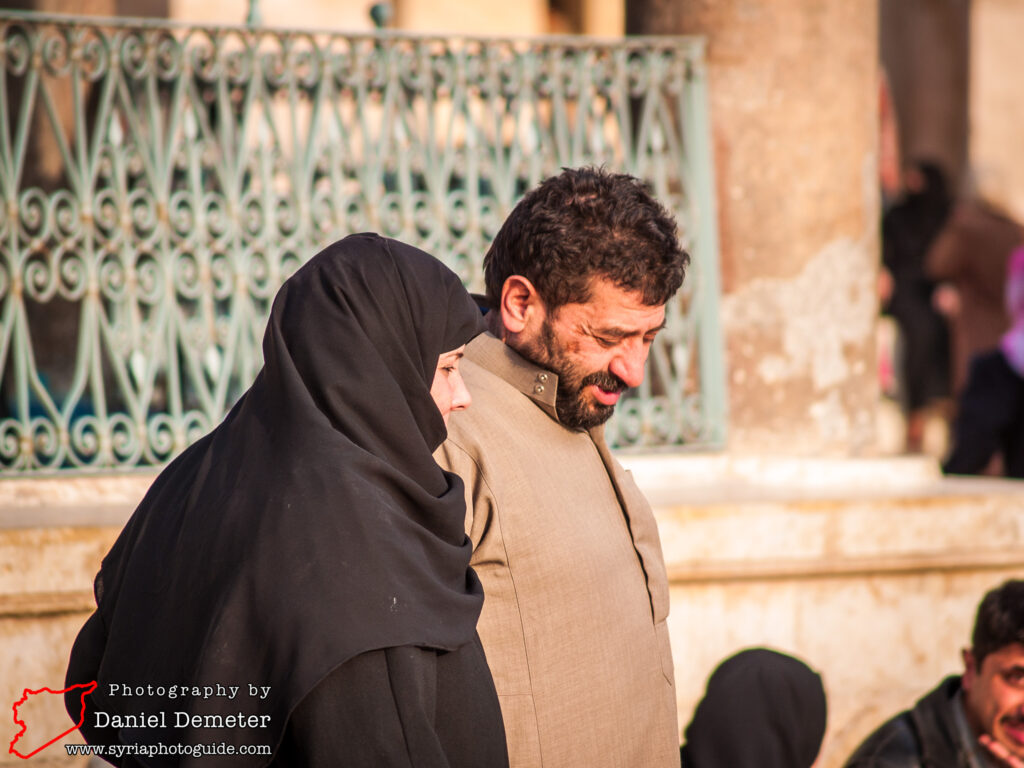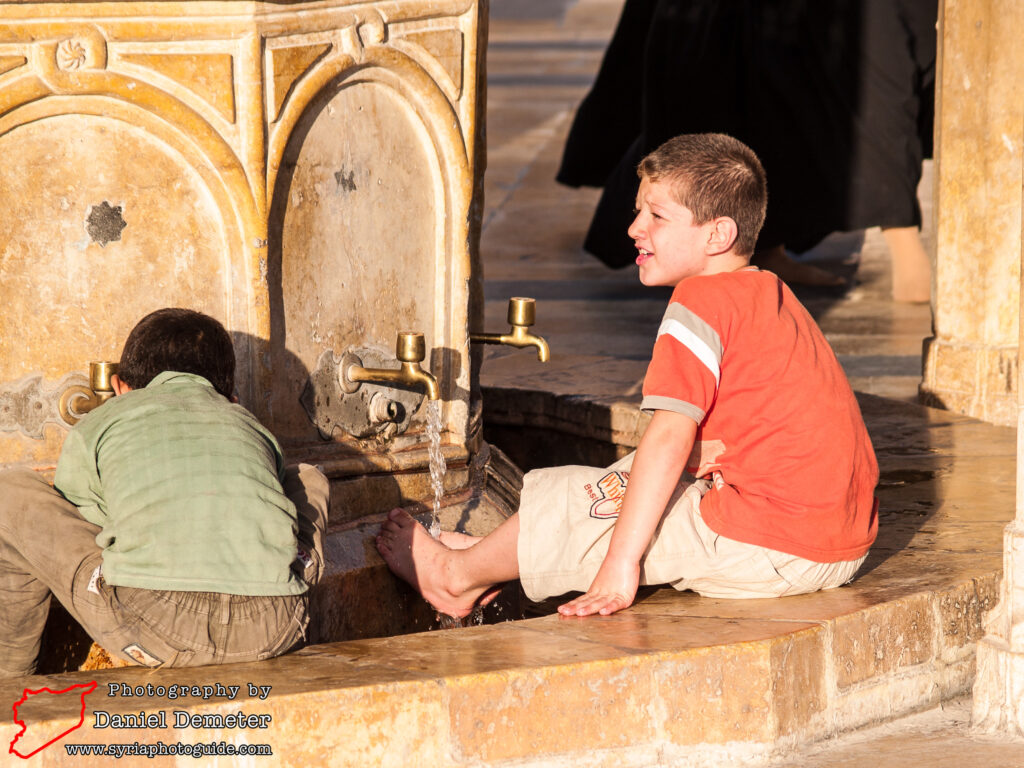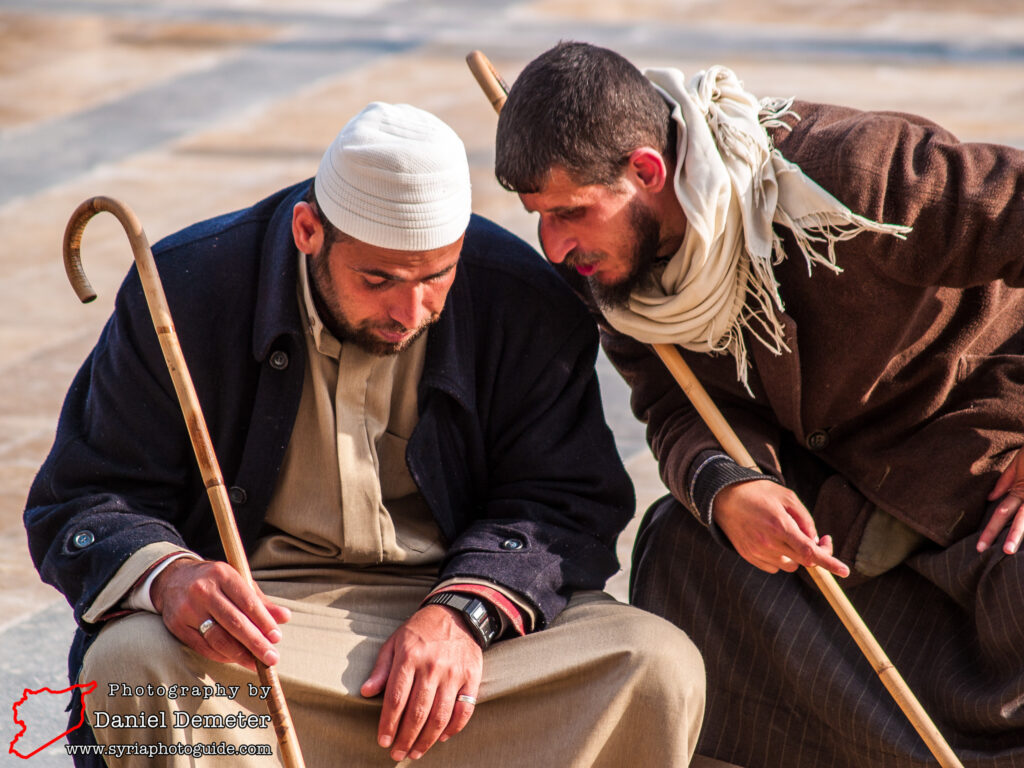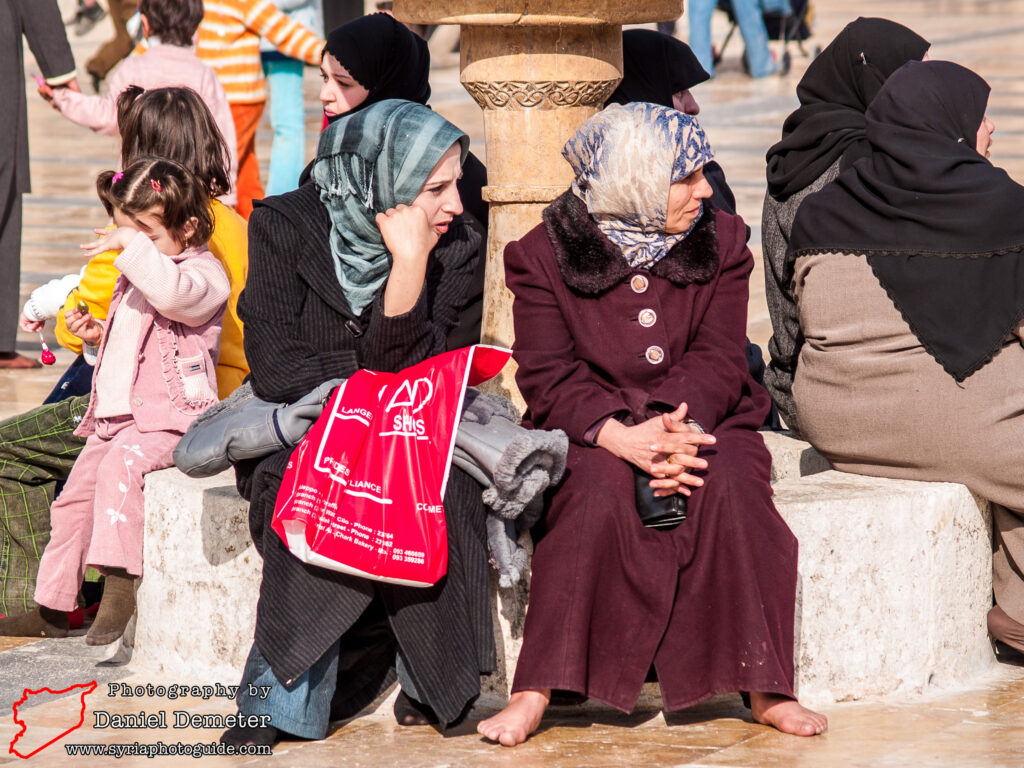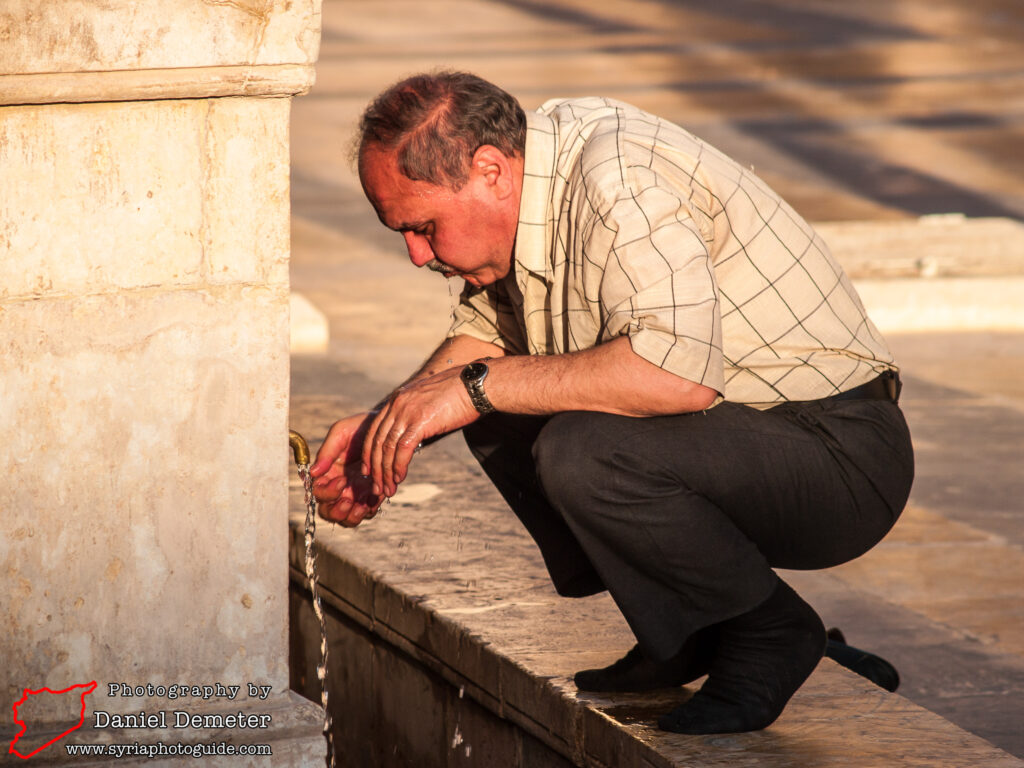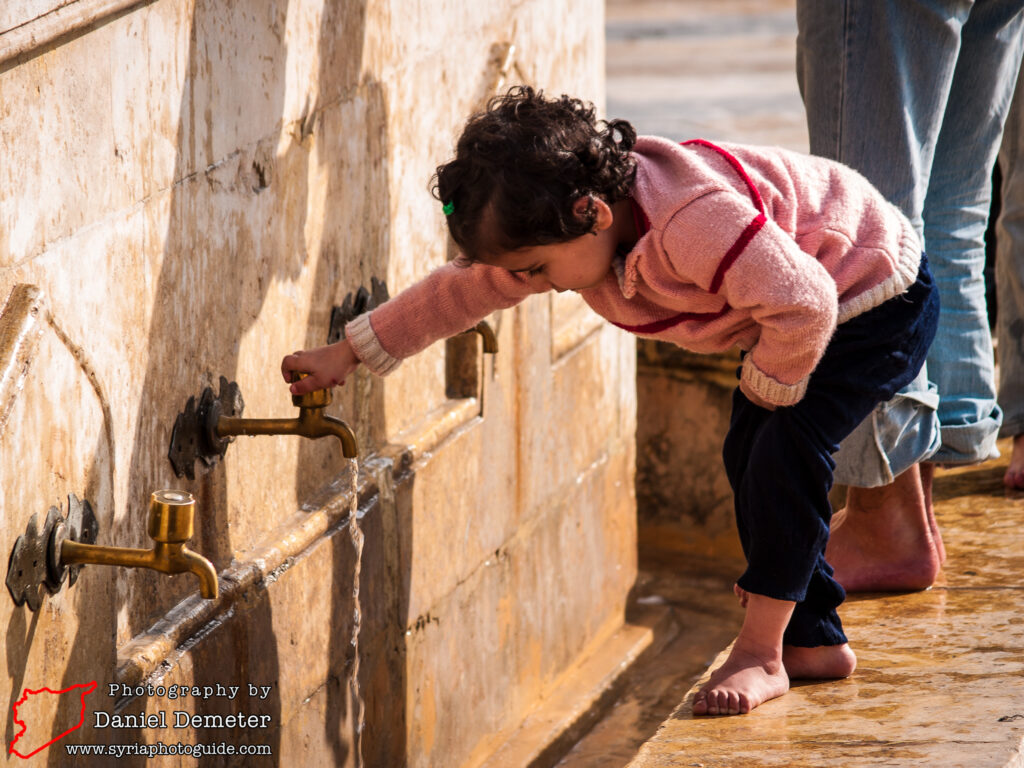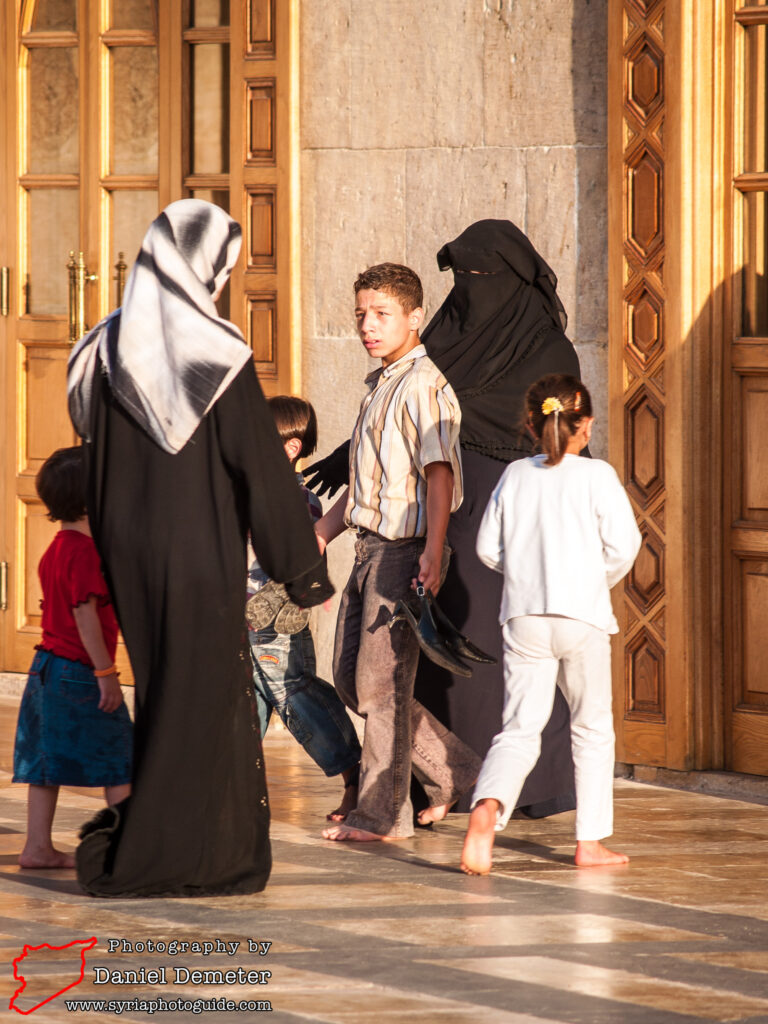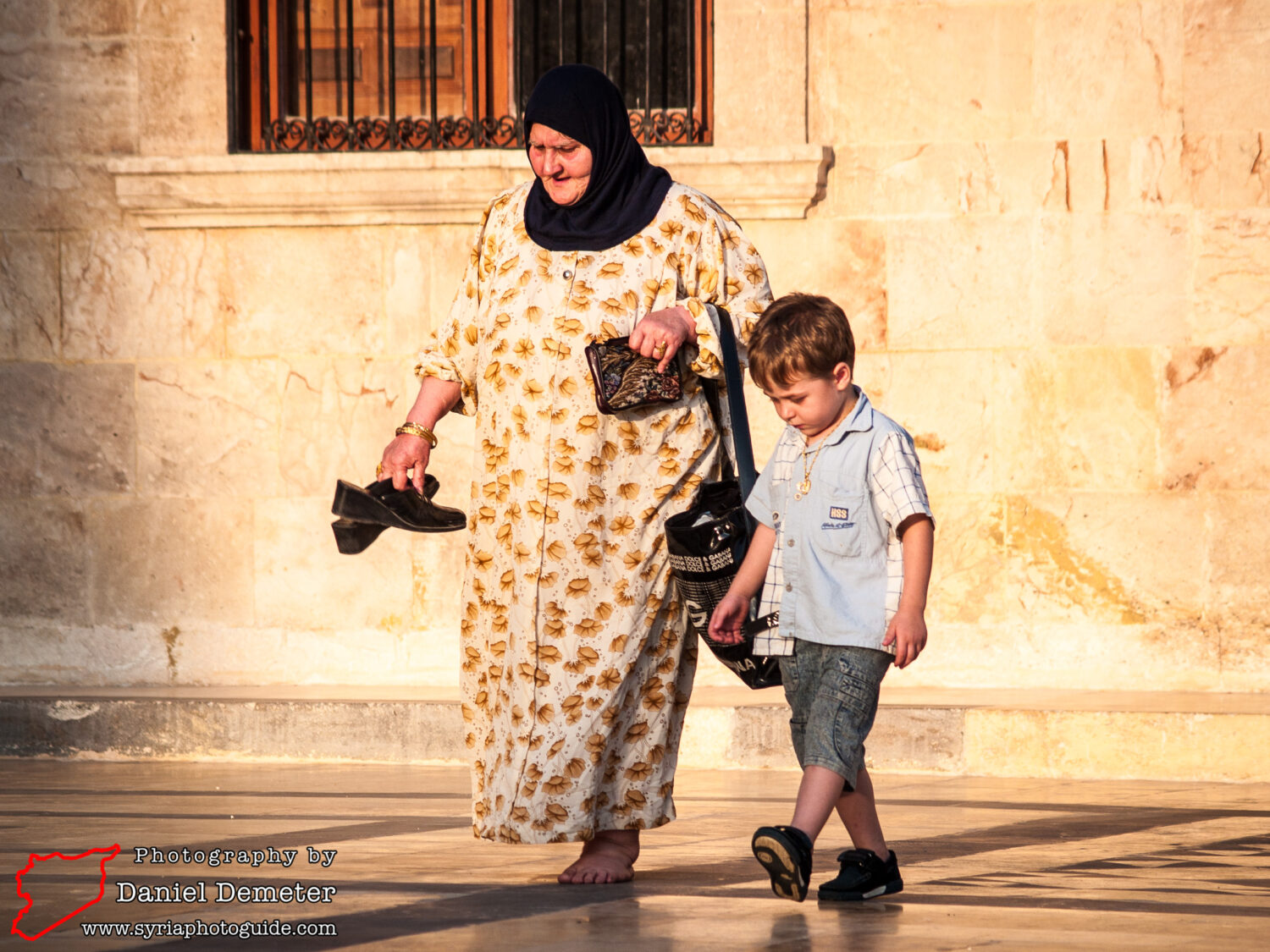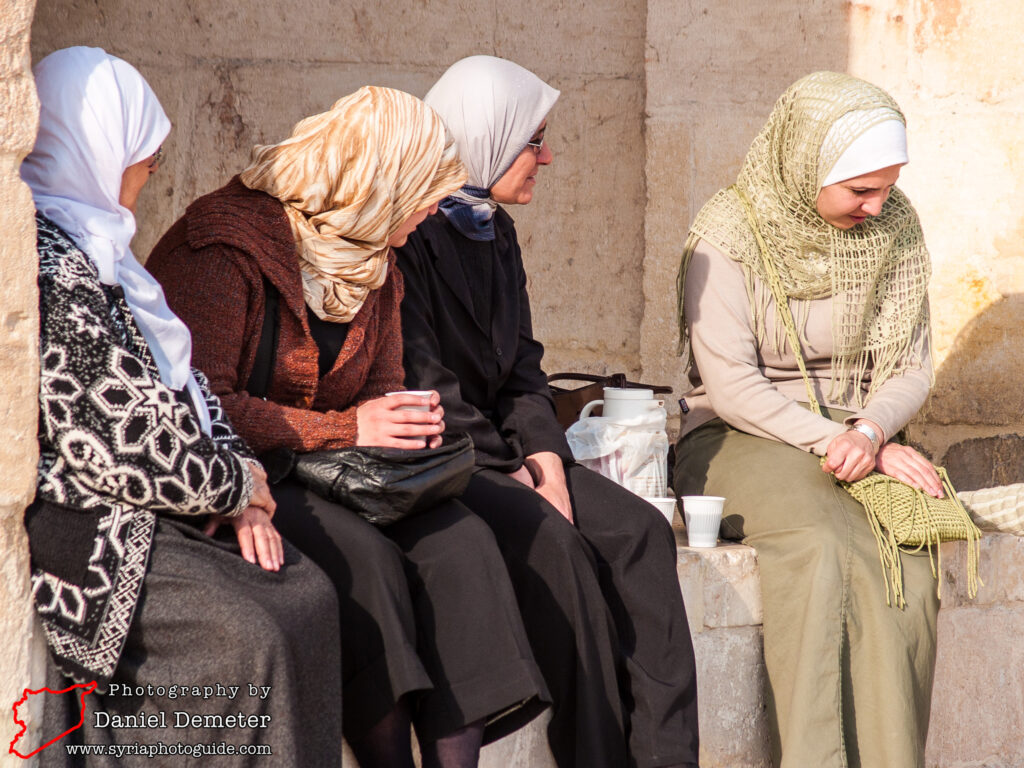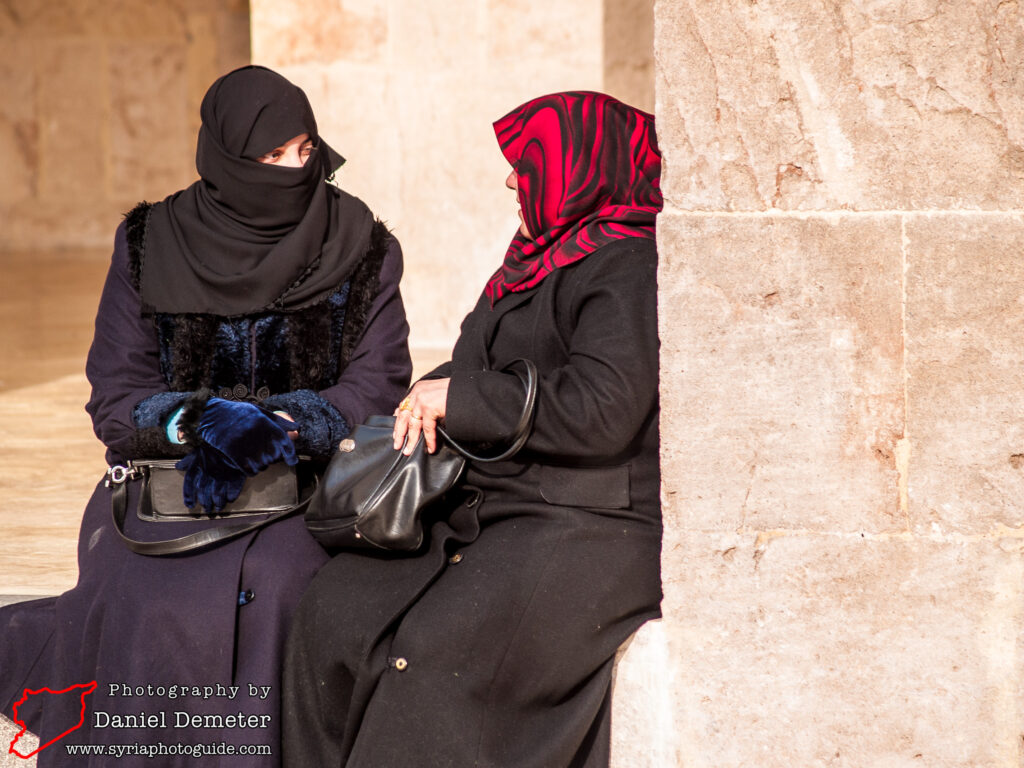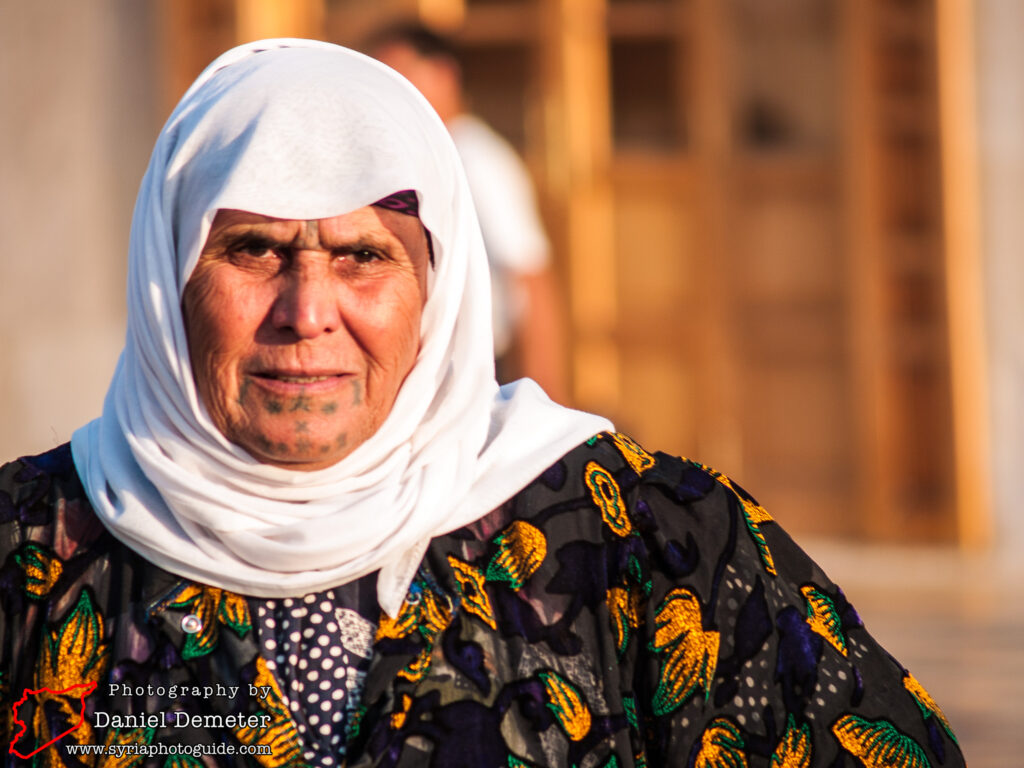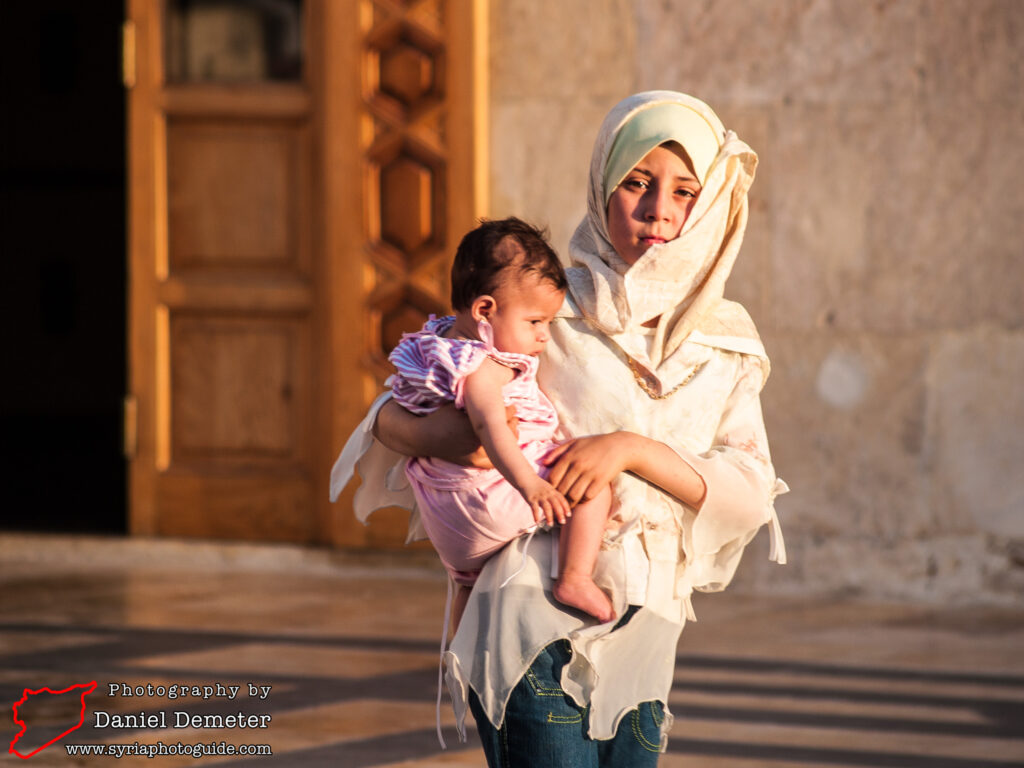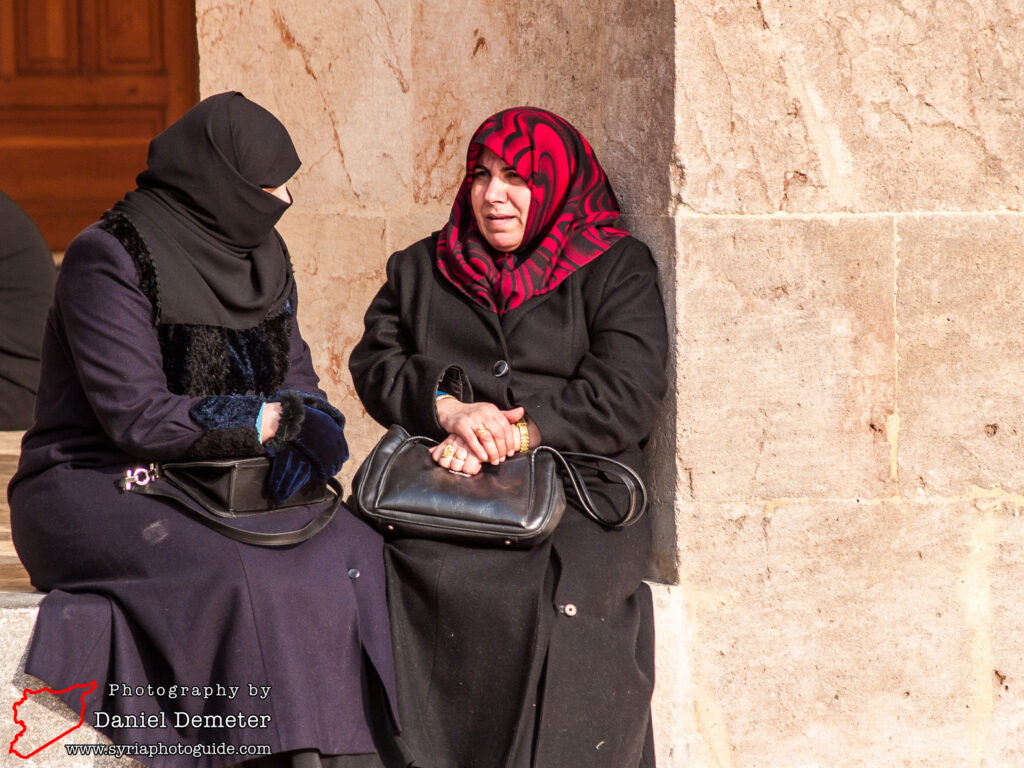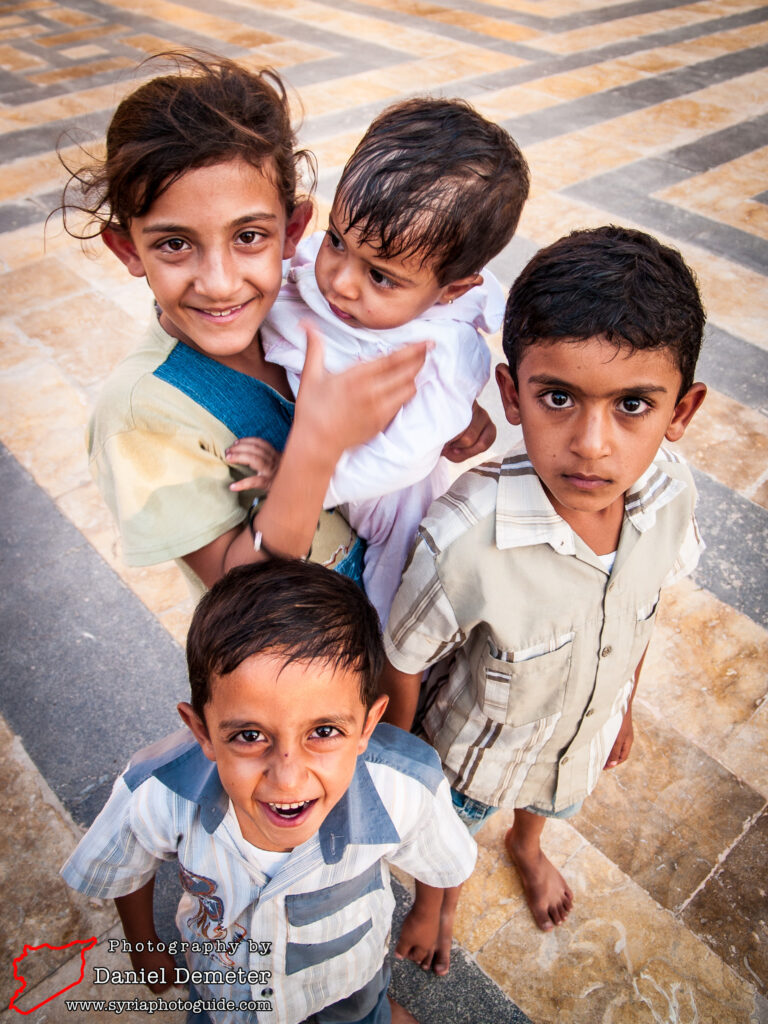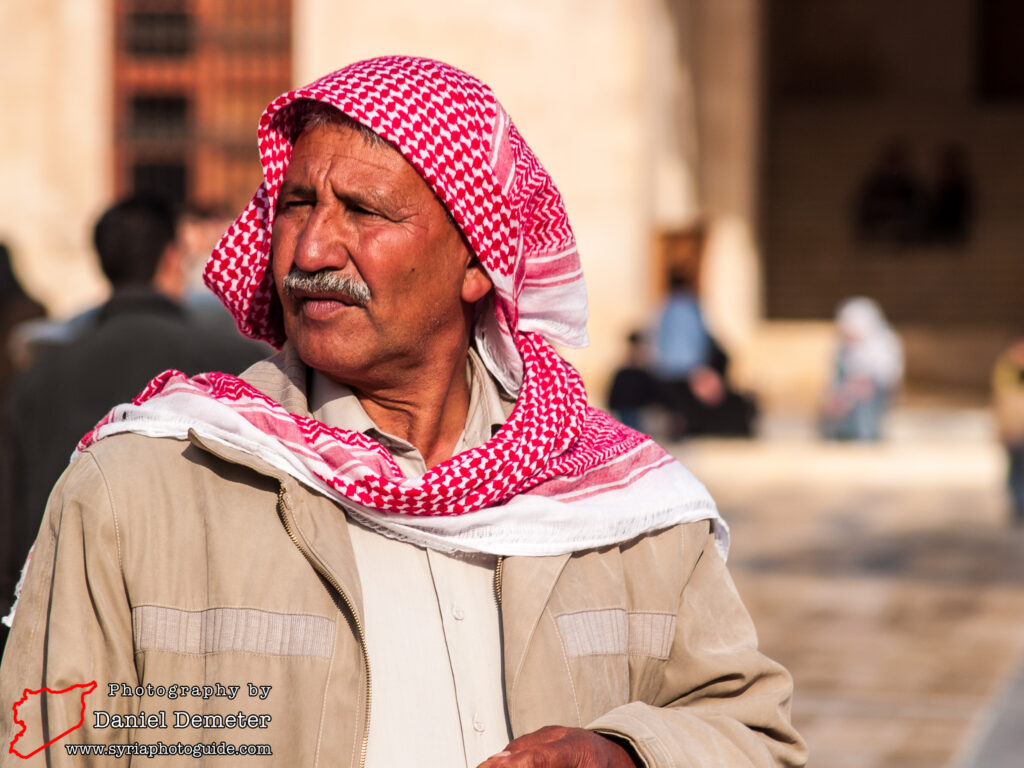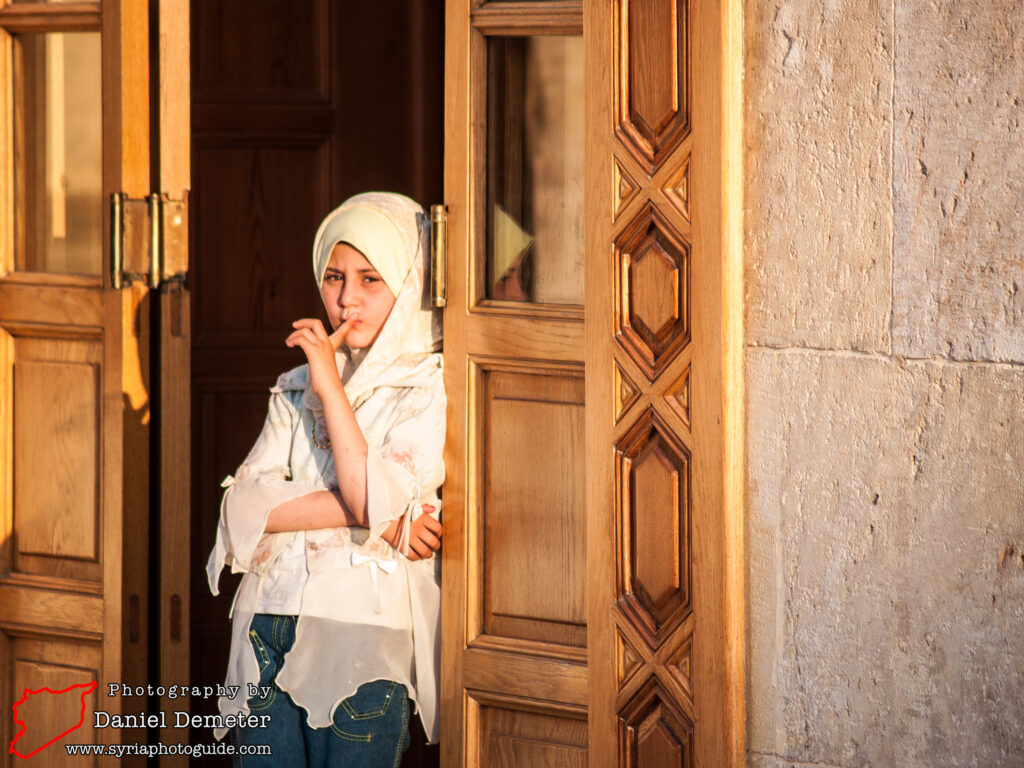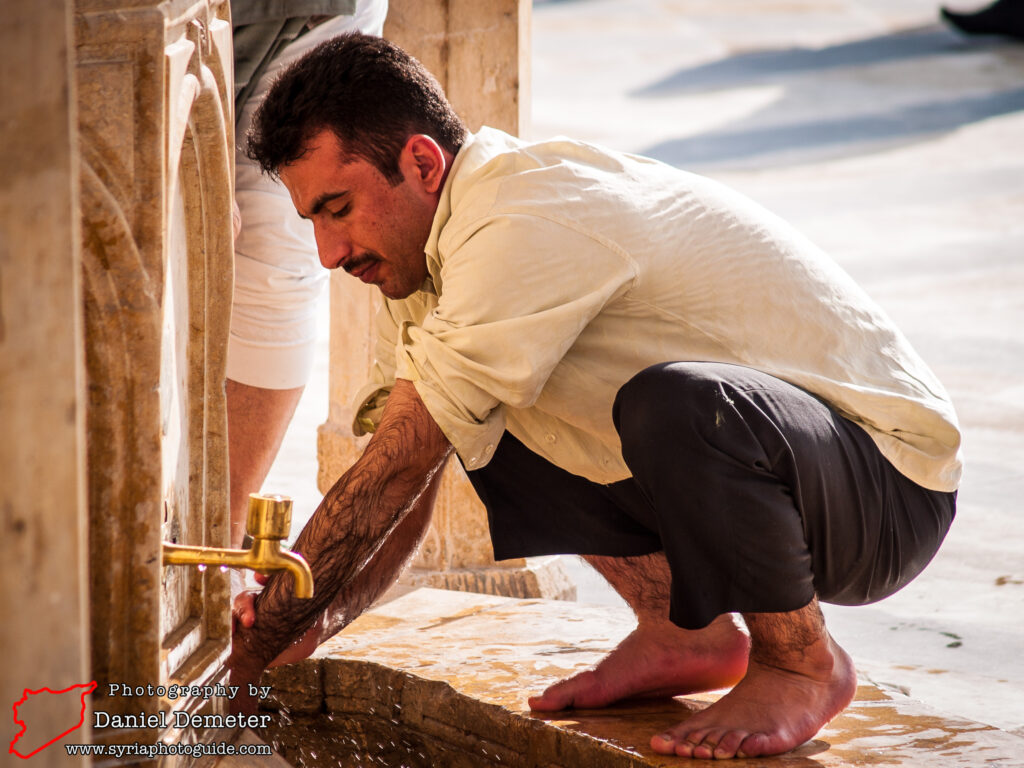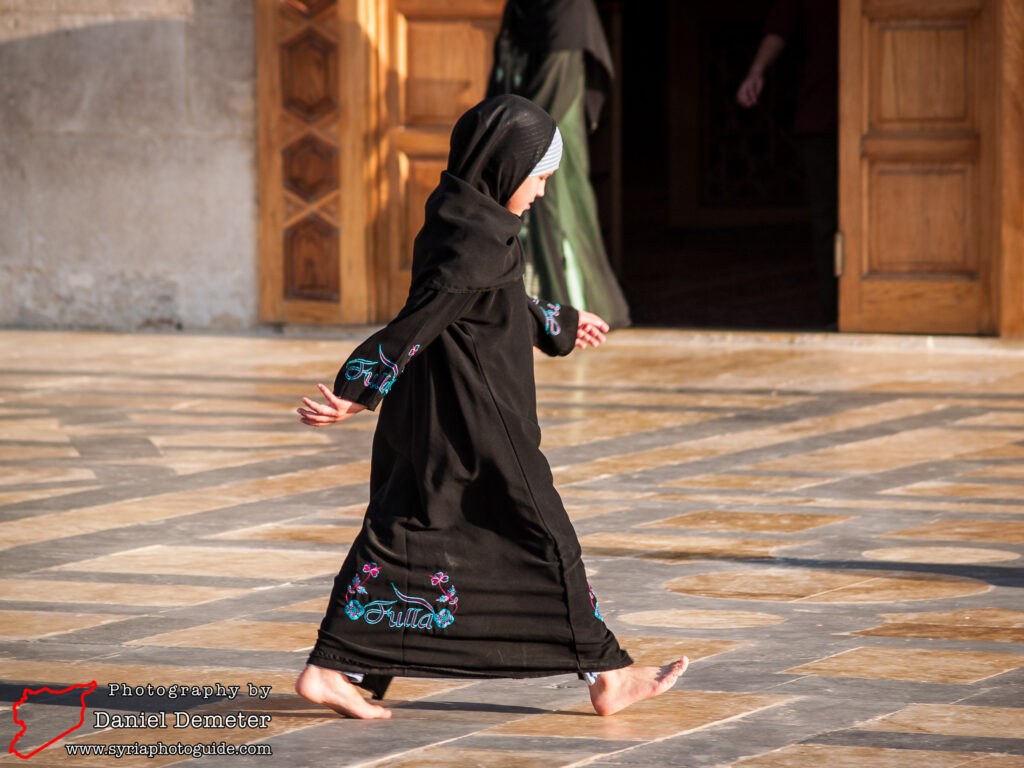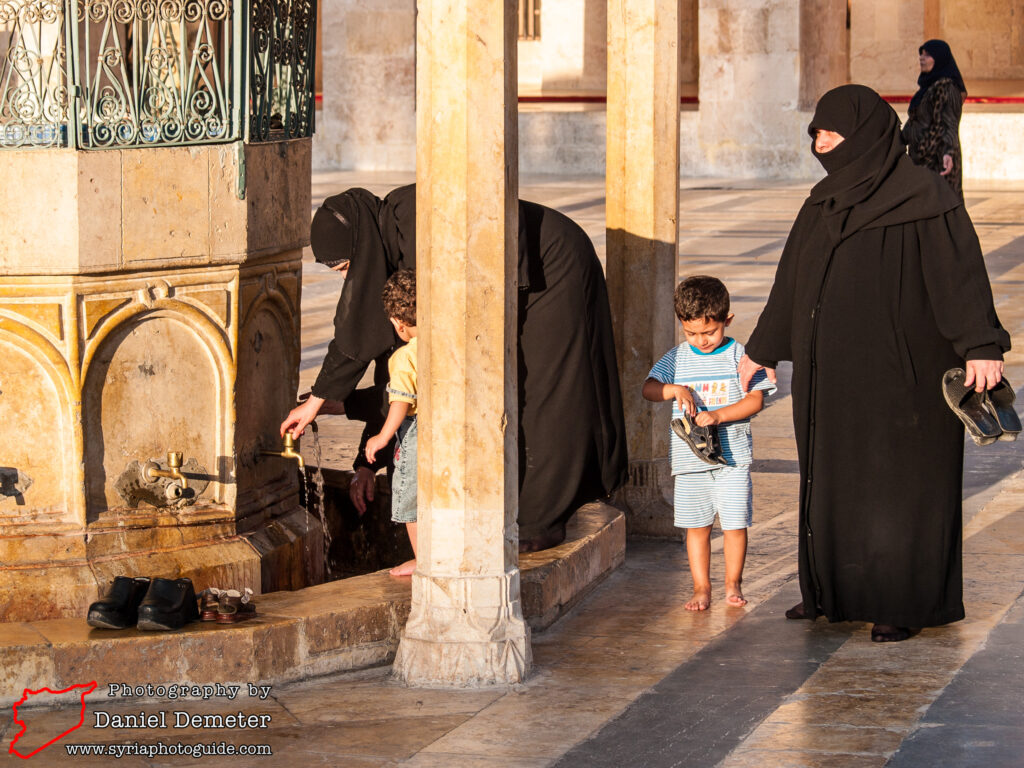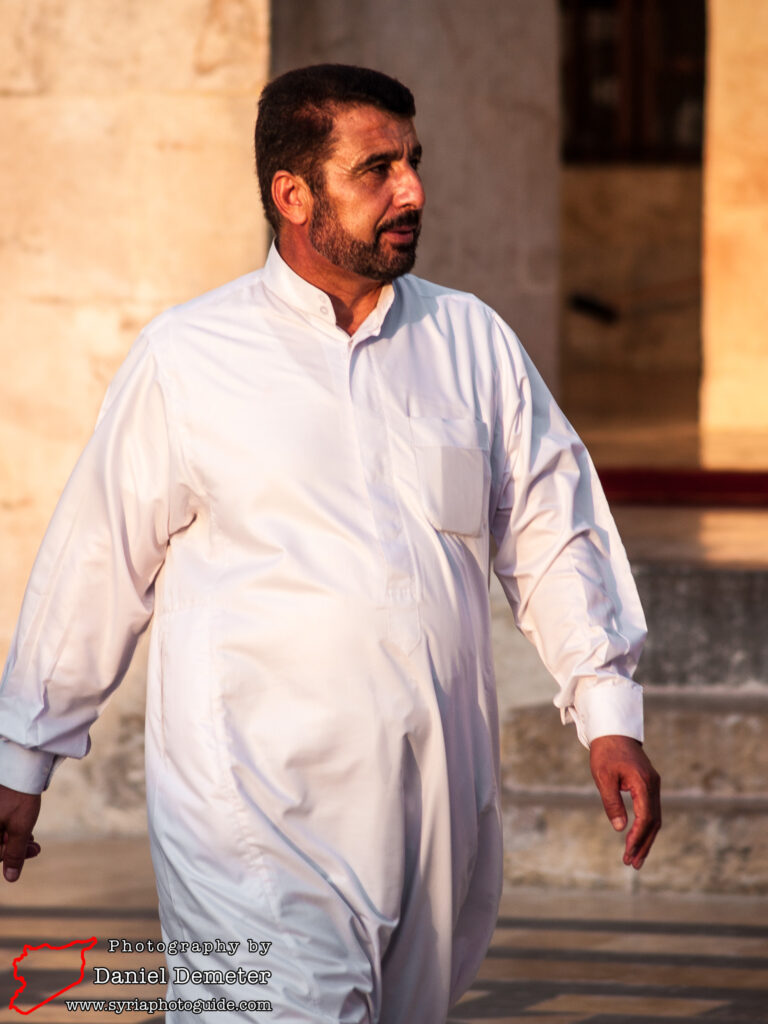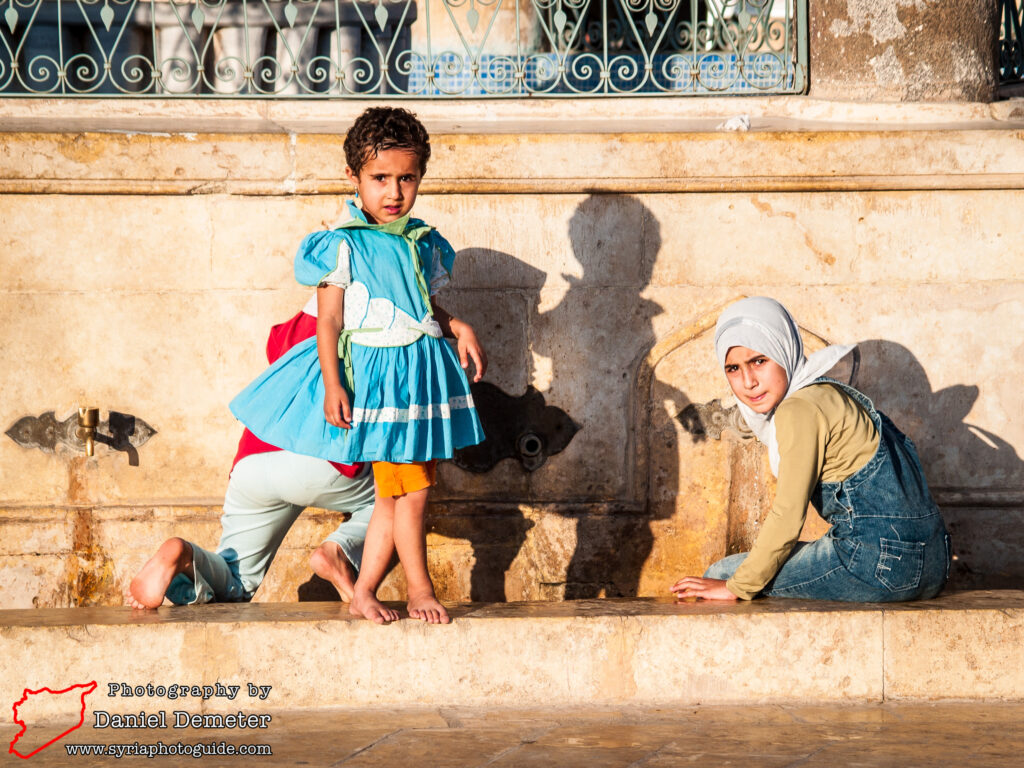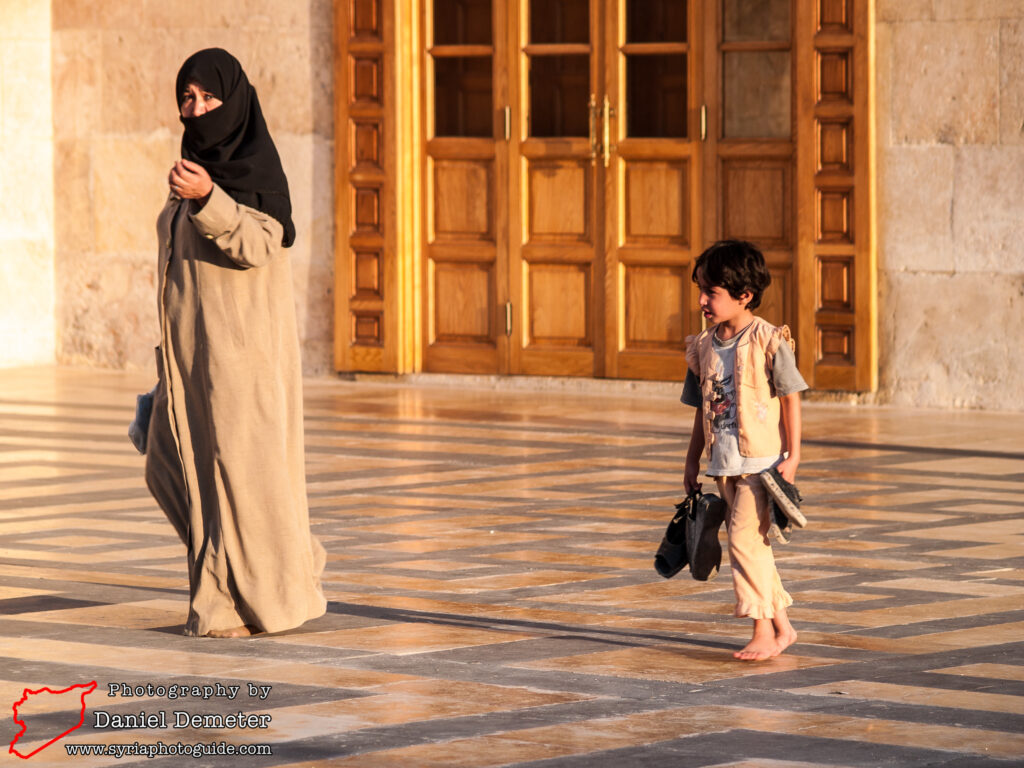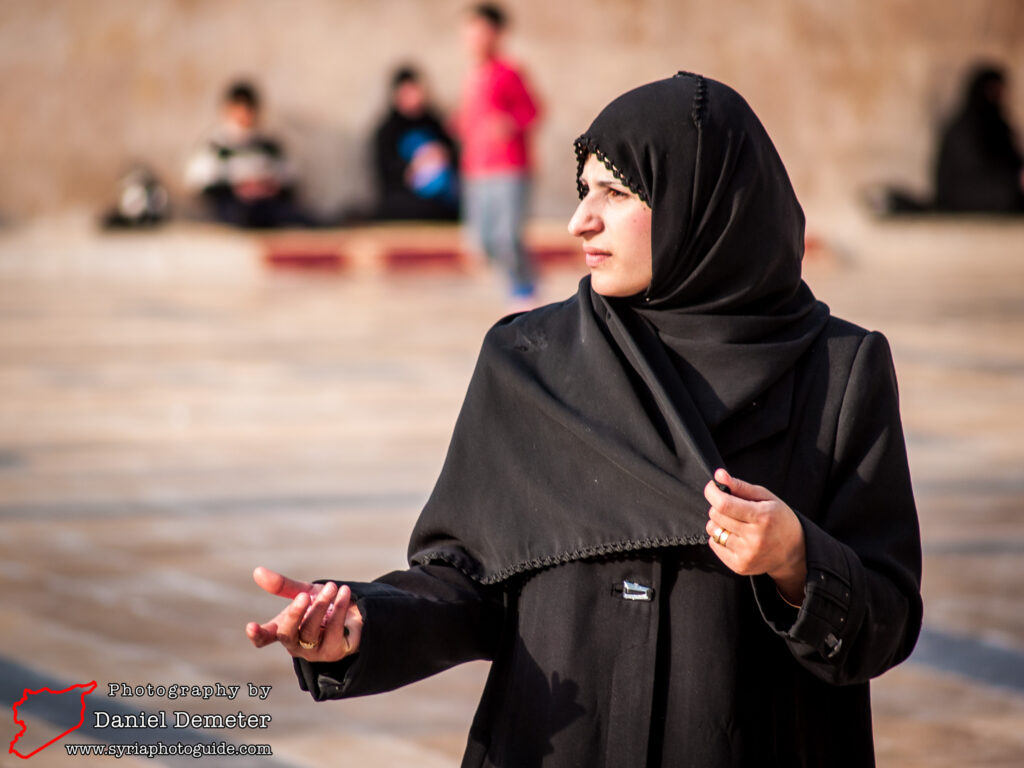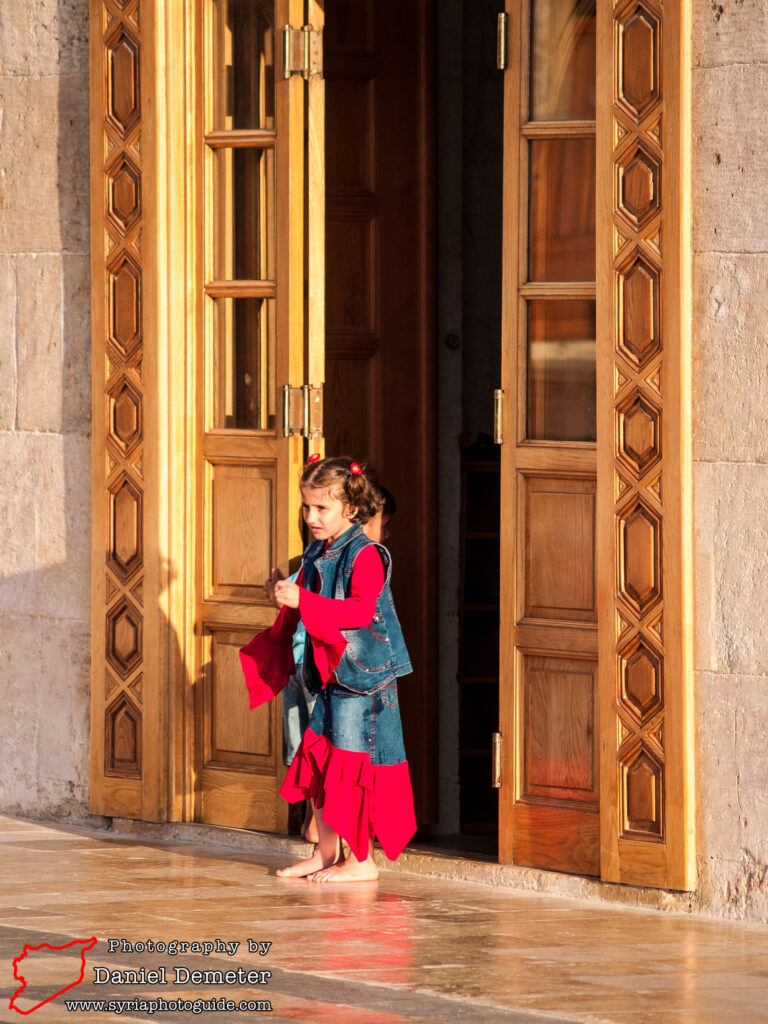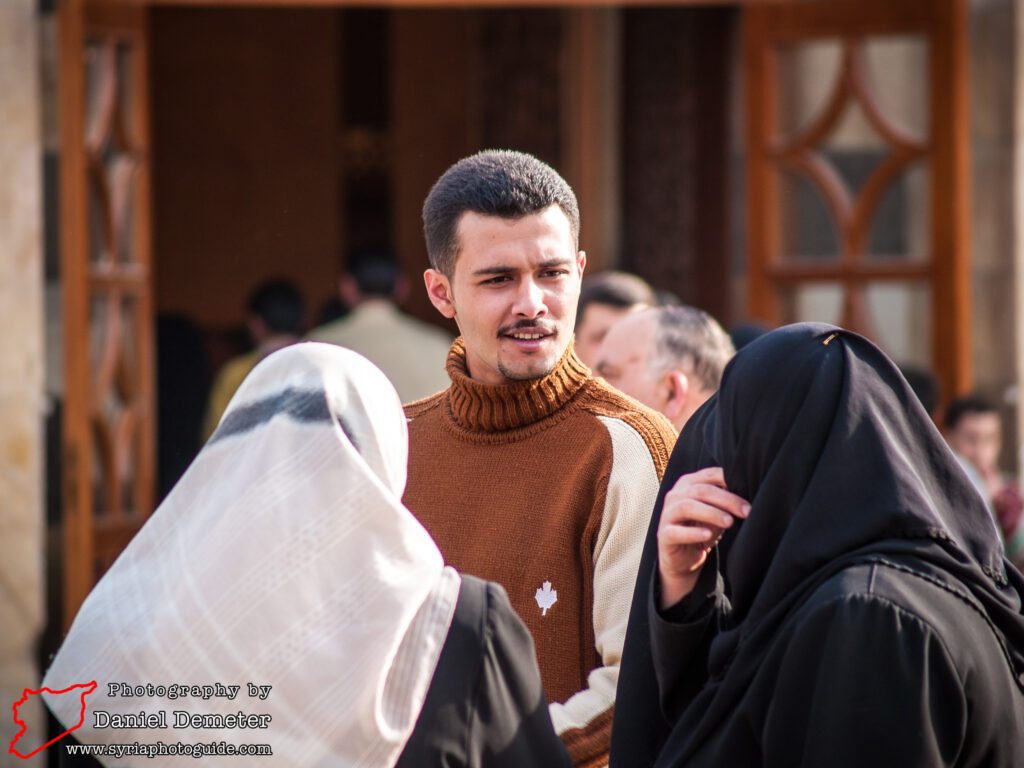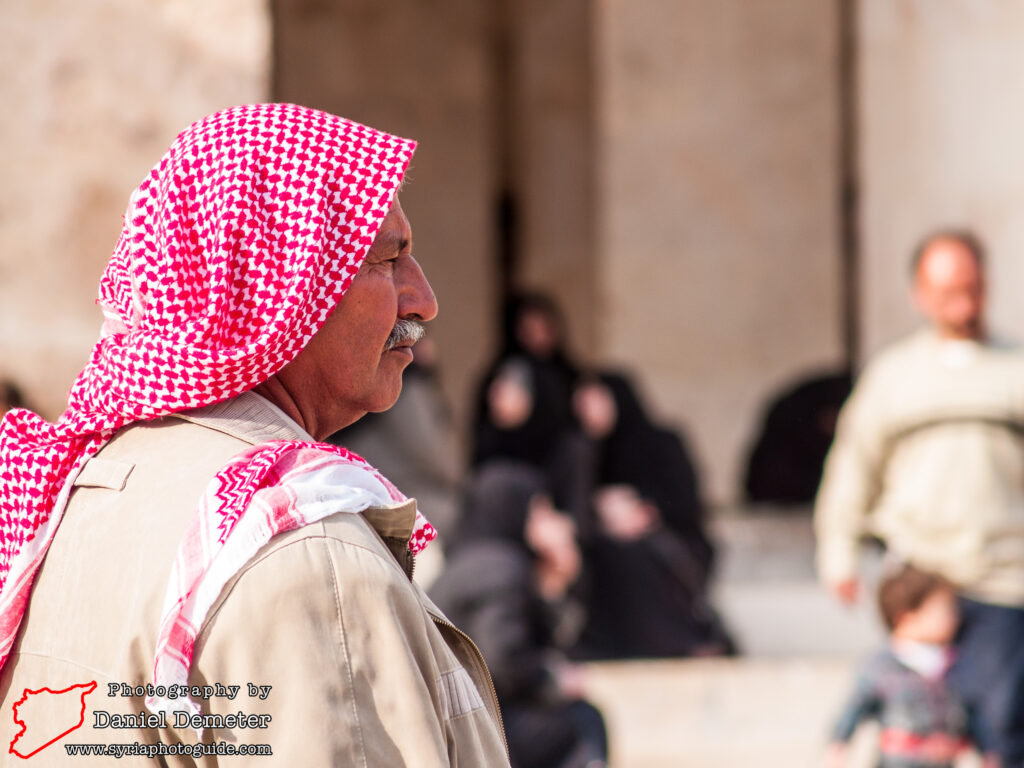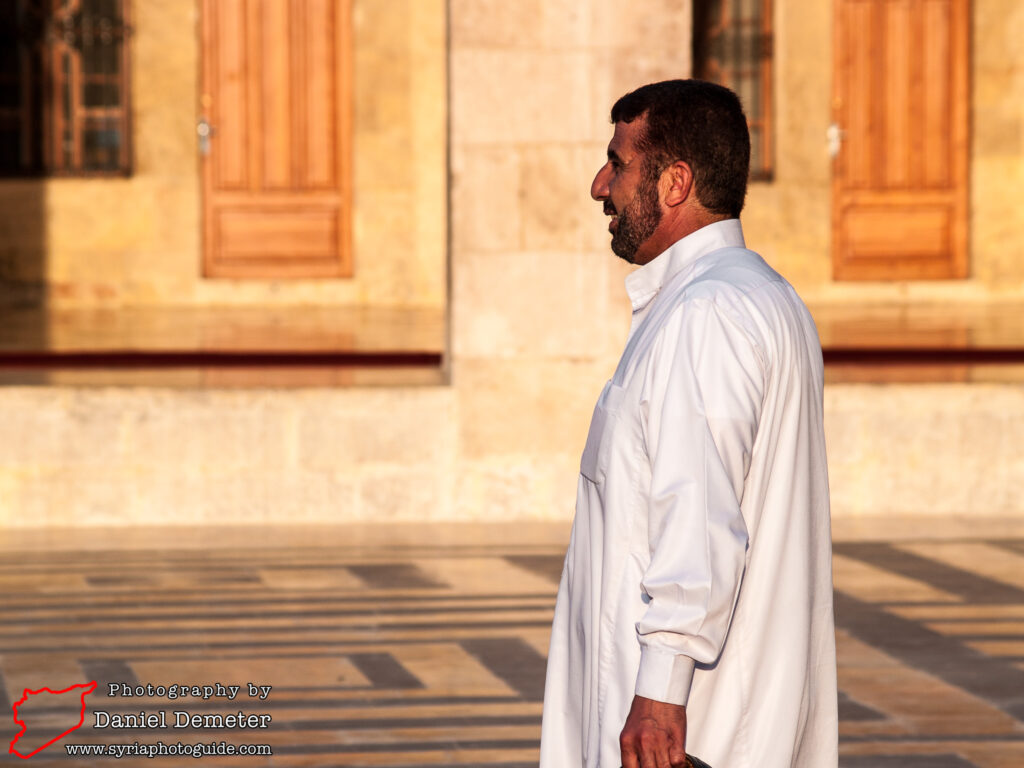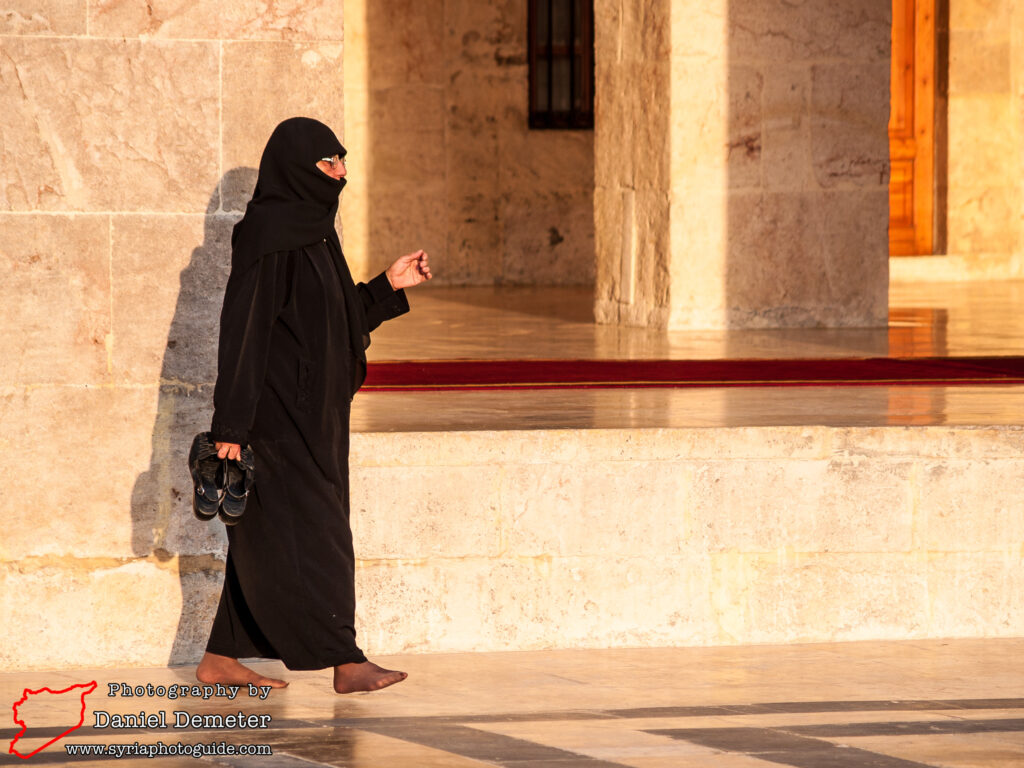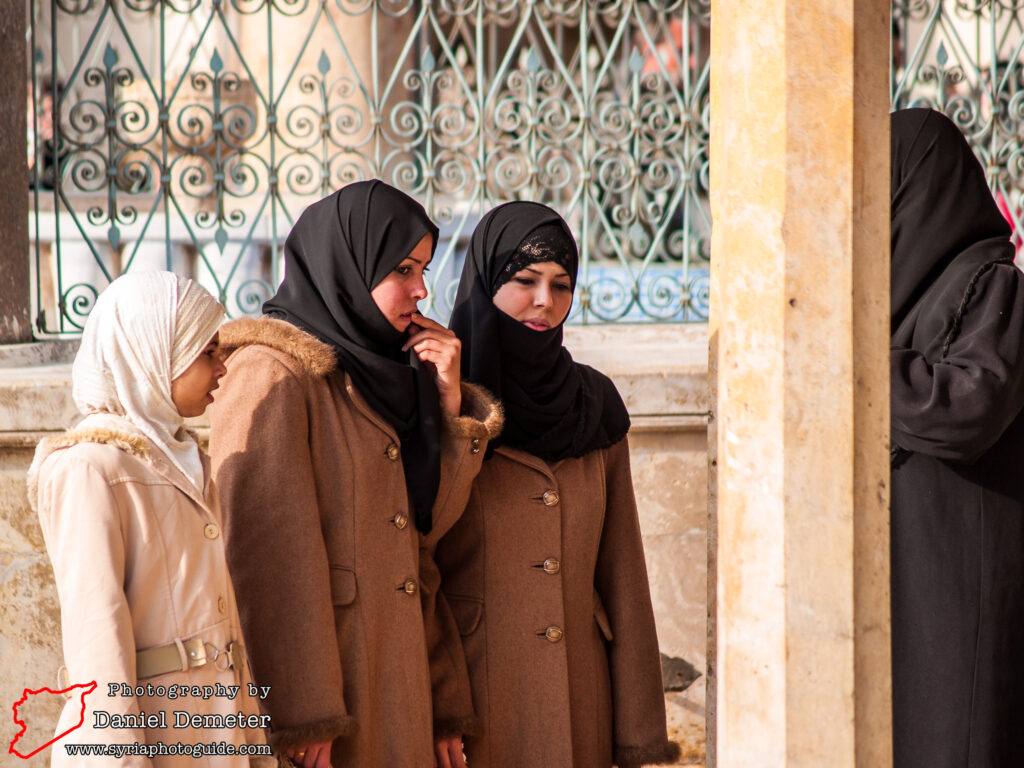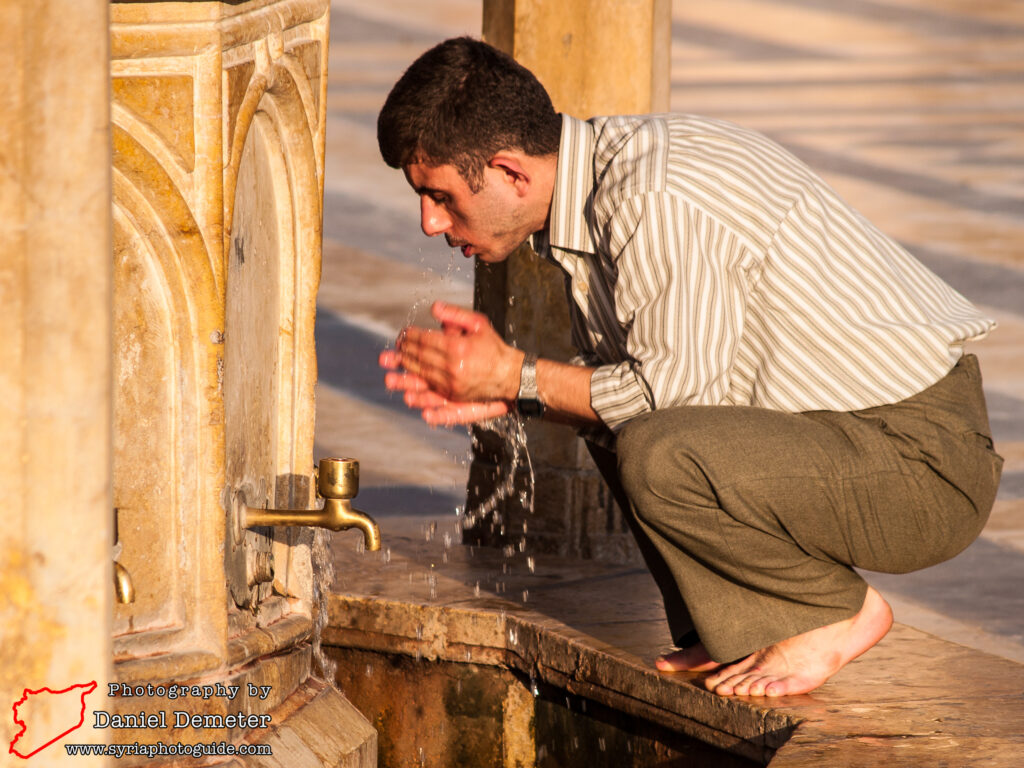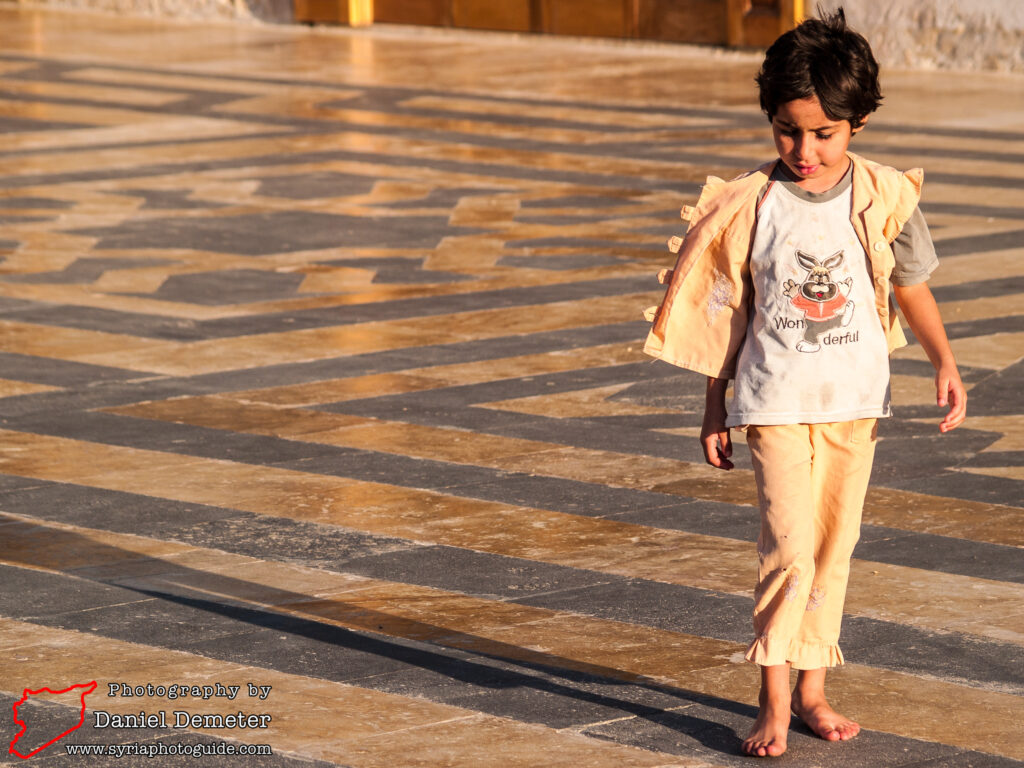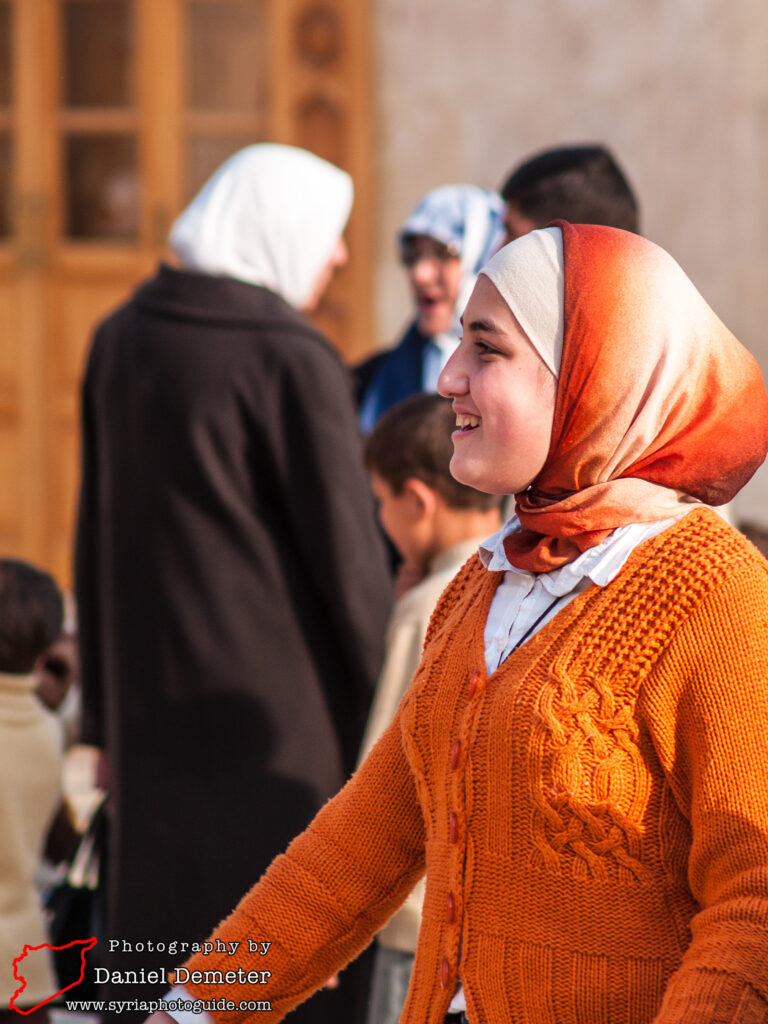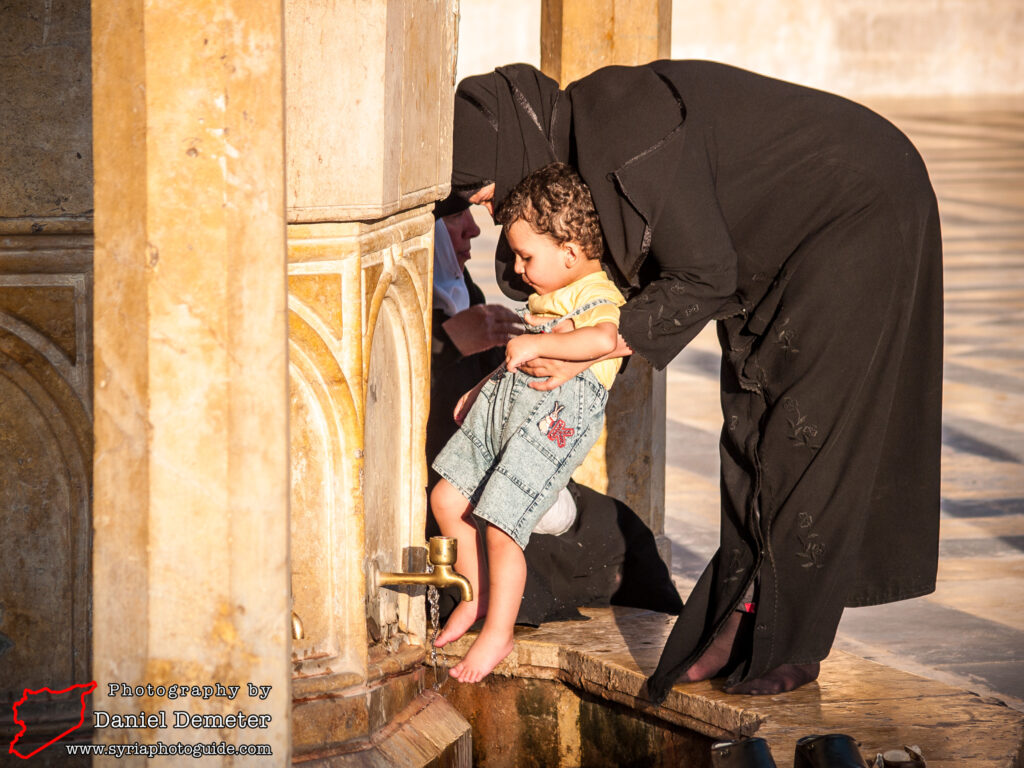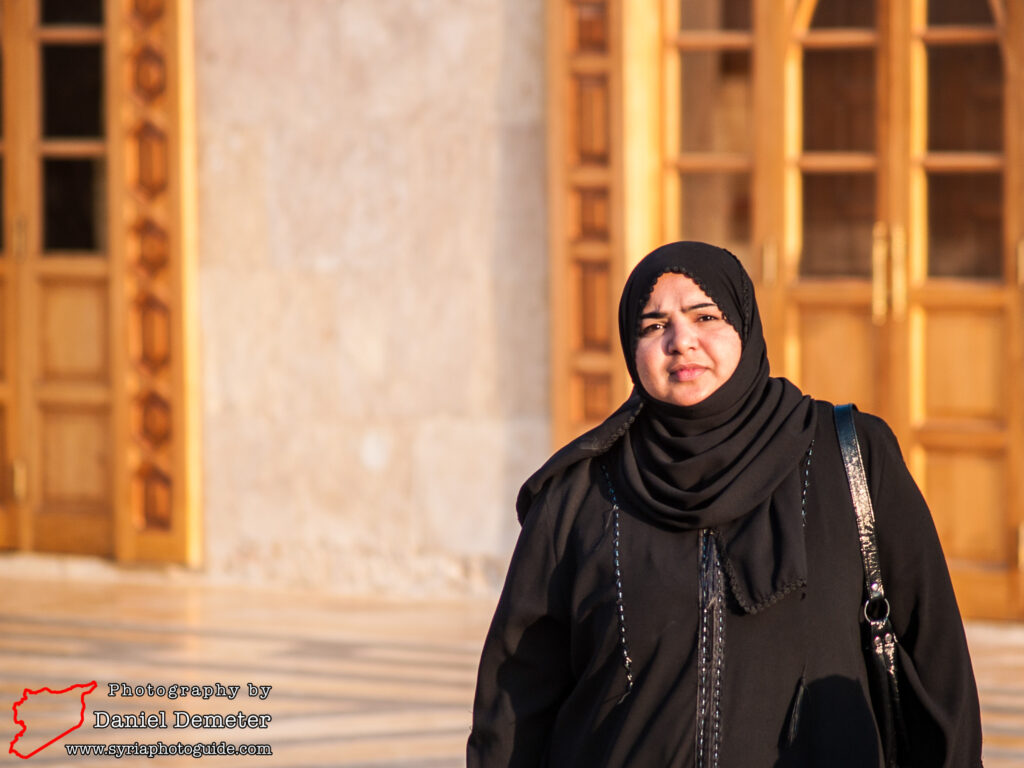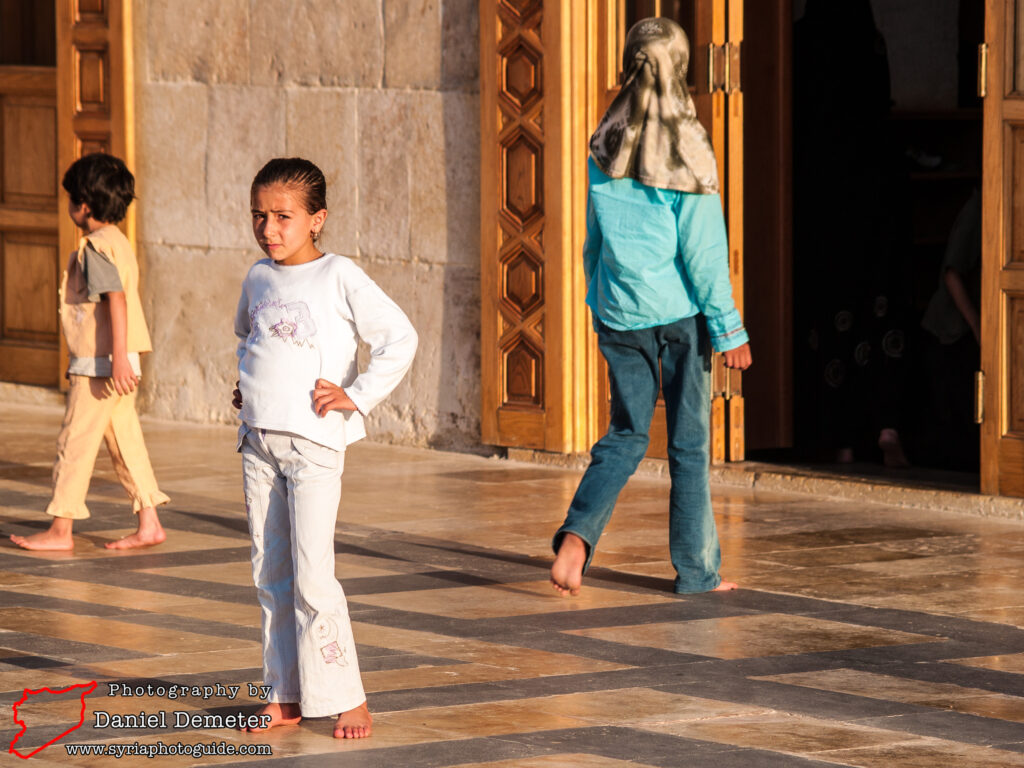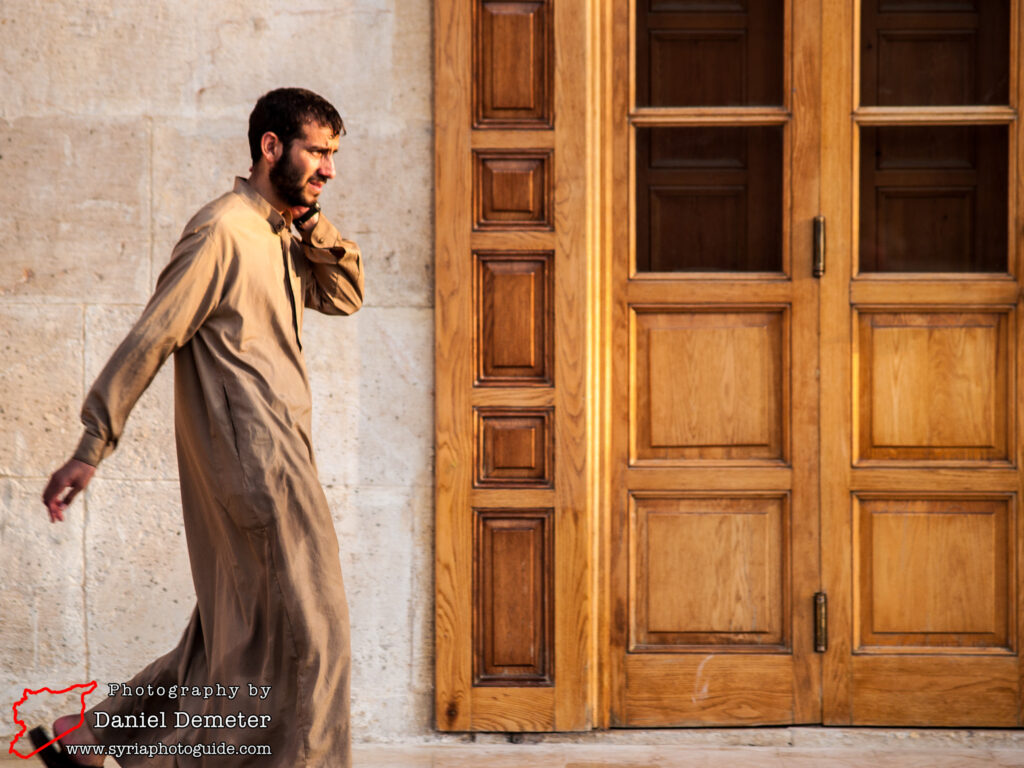Aleppo – People حلب – شعب
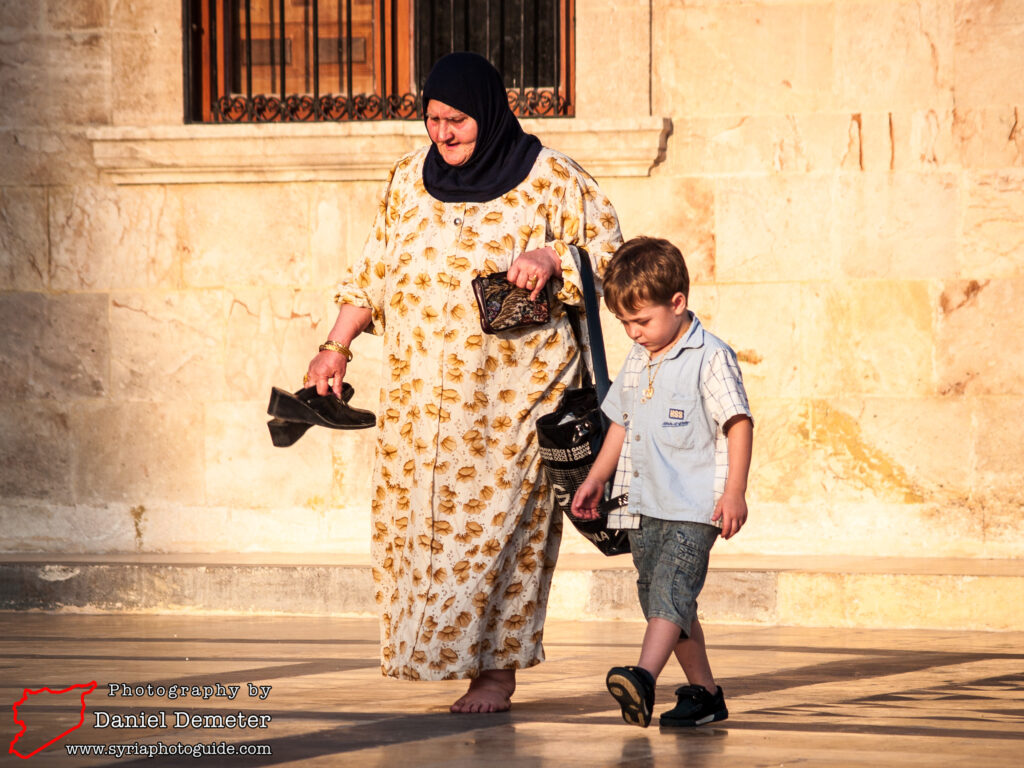
Most of Syria’s major urban centers are extremely diverse, and the city of Aleppo (حلب) is no exception. The population of the city was over 2,300,000 as of 2005, making it more populous than the capital. The residents of Aleppo (حلب) are predominantly Arab, speaking the northern Syrian dialect of Arabic. There is also a substantial Kurdish community, focused in and around the northern neighborhood of al-Sheikh Maqsoud (الشيخ مقصود). There are sizable ethnic minorities of Armenians, Turkmen, Circassians, Chechens, Albanians and Bosnians as well.
The population of Aleppo (حلب) over 80% Sunni Muslim. This community tends to be more socially conservative than in Damascus (دمشق) or Homs (حمص), and significantly more so than in the coastal cities of Lattakia (اللاذقية) and Tartus (طرطوس). In general, a visitor can sense that religion weighs more heavily on the population here than many other parts of the country, with religious observances more widely adhered to. This varies by neighborhood, however, with some areas of the city exhibiting a very liberal and cosmopolitan atmosphere.
Aleppo (حلب) has one of the largest Christian communities in the Middle East, and the largest in Syria, with an estimated population of over 250,000 from varying sects. Many members of this community are descendants of families that were forced to flee the genocide of Armenian and Assyrian Christians in Turkey in the 1910s, and many of those Armenian residents speak Armenian as their first language. The Christian community was traditionally centered around the historic neighborhood of Jdeideh (جديدة), but the population today is focused more around the northern neighborhoods of al-Aziziyeh (العزيزيه) and al-Suleimaniyeh (السليمانية). The city no longer has a notable Jewish population, most having emigrated to the United States.
These images were taken in and around the Great Mosque of Aleppo (جامع حلب الكبير) and represent a glimpse of the more traditional and conservative segment of the population. This album is not meant to reflect the diverse demographics of the city.
